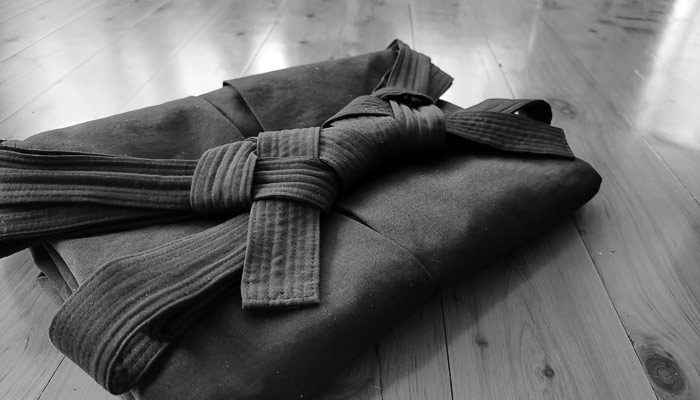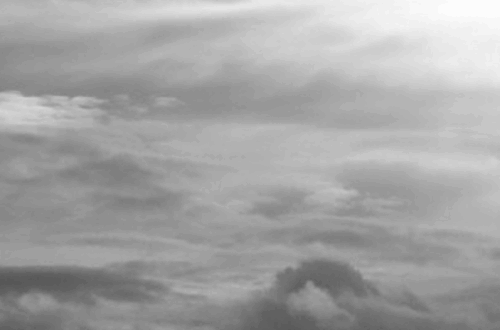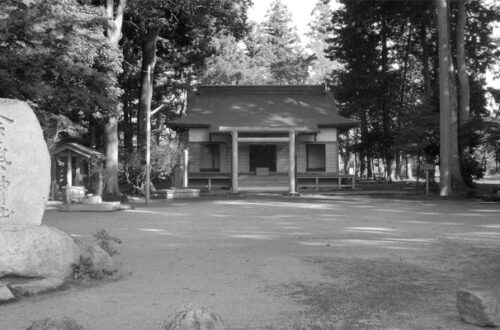
The Story Behind Aikido’s Traditional Attire: Hakama
A hakama 袴 is a traditional Japanese garment that has been worn in Japan for centuries. Originally, it was worn by nobles, court officials, and samurai warriors as a symbol of their status and rank. It naturally became the standard outfit for those who practice kobudo 古武道, including the samurai. Today, practitioners of these old arts, as well as modern arts such as aikido 合氣道, iaido 居合道, or kyudo 弓道, continue the tradition of wearing hakama during training. However, some arts have discarded this tradition due to various reasons such as practical reasons in judo 柔道 or origin/religious reasons in shorinji kempo 少林寺拳法.
The history of the hakama in aikido has undergone significant changes since Ueshiba opened his first dojo, Ueshiba Juku 植芝塾, in Ayabe. At the beginning, wearing hakama was mandatory for both men and women attending aikido training. After the Pacific War, it became optional, and now it is generally reserved for Yudansha 有段者, those who hold a dan rank, while some dojos may allow women to wear hakama at an earlier stage.
According to some of Ueshiba’s uchi deshi, every student was required to wear a hakama from the first time they stepped onto the mat. Ueshiba believed that wearing a hakama during training was an essential attribute and etiquette for those pursuing budo. He would scold and stop those training without one. To comprehend this, one needs to understand that the term gi 着, also known as dogi 道着 or keikogi 稽古着, refers to the uniform worn for martial art training and consists of two parts: the jacket called uwagi 上着, and the pants called shitabaki 下穿き, which literally means underpants. Therefore, training without a hakama is essentially training with underpants, which is very inappropriate from Ueshiba’s perspective.
While Ueshiba was strict about wearing a hakama, he placed no restrictions on the type, quality, color, or even pattern of hakama that students could wear. Many uchi deshi recalled that all sorts of hakama, from low-quality ones made from old curtain cloth to hakama used in kendo 剣道, iaido, or Japanese dance/opera, and even high-quality silk ones meant for special celebrations or ceremonies could be seen in the dojo. However, Ueshiba emphasized the meaning of the hakama and the seven pleats in it. According to Mitsugi Saotome 五月女貢 in his book, The Principles of Aikido, Ueshiba used to lecture his uchi deshi that the seven pleats symbolize the seven virtues of budo: jin 仁 (benevolence), gi 義 (righteousness), rei 礼 (courtesy), chi 知 (wisdom), shin 信 (integrity) in the front, and chu 忠 (loyalty), koh 孝 (filial piety) at the back. These qualities were found in the distinguished samurai of the past, and the hakama prompts us to reflect on the nature of true bushido.
The Pacific War began at the end of 1941, and during and after the war, materials became scarce. Many students were too poor to afford a hakama. According to Shigenobu Okumura 奥村繁信 in Aikido Today Magazine #41, it was under these conditions that the idea of “one can not wearing a hakama until shodan” emerged. The idea was put forward purely to avoid expenses rather than making hakama a symbol of dan ranking. At that time, wearing a hakama was optional before shodan 初段, which is not the same as “wearing hakama only after shodan”. However, as time passed, wearing a hakama gradually became associated with rank.
Today, in aikido, the wearing of hakama generally begins with shodan, but this may vary for women depending on dojos and teachers. At Hombu Dojo, women start wearing hakama from 3rd kyu onward, while some other styles may start from the completion of the first grading or even from the beginning of training.
Suggested reading: Development of Dan Ranking System in Japanese Martial Arts and its Adoption in Aikido
Author’s Note: We appreciate your readership! This article serves as a preliminary introduction to the subject matter. While we aim for accuracy, we cannot guarantee the content’s precision and it may contain elements of speculation. We strongly advise you to pursue additional research if this topic piques your interest. Begin your AikidoDiscovery adventure! 🙂




